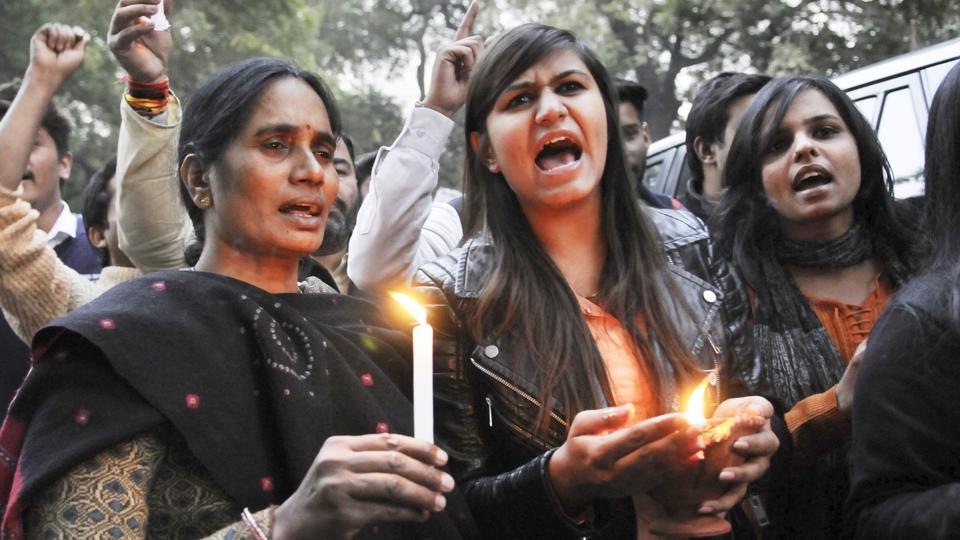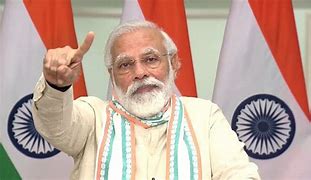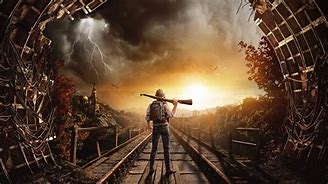Feature
Even After Six Years Of Nirbhaya, Girls Are Not Safe In Delhi

Six years after 23-year-old Nirbhaya was brutally raped and murdered by five men on December 16, earning Delhi an epithet of “rape capital” of India, has the national capital become any safer for women? Crime data doesn’t suggest so and females who live and work in the city and its peripheries also don’t feel safer despite resolves by the centre and city governments to enhance women’s safety.
According to National Crime Records Bureau (NCRB) data for year 2016-17, Delhi reported the highest crime rate (160.4) compared to the national average rate of 55.2. The capital reported nearly 40 per cent of rape cases (2,155 cases of rape, 669 cases of stalking and 41 cases of voyeurism) durin the period.
Sumitra Girotra, a Haryana girl who works in Noida but lives in a hostel in Delhi, feels “palpably unsafe even in the so-called posh areas of the city”.
“It may be strange to read about women getting molested in the broad daylight but it is certainly not strange to be verbally molested or to get rape threats while walking down the roads in Delhi. I have been a victim many times,” Girotra said, recalling an incident when she asked a drunk man to stop staring at her near Mandi House, a few steps away from her hostel.
It was 8.30 p.m.

“He was peeing and staring at me. When I objected, he turned towards me with his zip down and started abusing me with rape threats. I gave it back to him and tried fighting back. Dragged him to the hostel and called the guard for help. He refused saying it is dangerous to fight them. I called up police and by the time they came, the guy had disappeared.
“Police instead of looking for the guy asked me to register a case, give my name and other credentials. I mean it gets more frustating and worse after you suffer.
“The mindset is certainly universal but the situation here in Delhi is just too bad. I have travelled to other parts of the country…but never felt so unsafe.”
Utkarsha Dixit, a 24-year-old Gurgaon based designer, said it was “indeed scary” for a woman to remain outside home after 9 p.m., even if it is a public space.
“You never know which men standing next to you and looking at you can be a potential molester. And taking an auto or travelling in a cab is now even more of a nightmare. I personally never feel safe without my pepper spray, at least it’s an immediate option to protect myself. I cannot depend on police as most of the time their helpline number doesn’t work,” Dixit said.
Sukanya Ghosh, 28, an art designer at an advertising firm, echoed. She noted that strange fear of travelling alone is palpable even during the day time.
“Even travelling in the general coaches in metro has often turned into a nightmare with terrifying incidents of being physically molested, that too in public space.
“So, I really don’t know where I can claim myself to be in the safe zone,” Ghosh noted.
Neha Nar, a medical practitioner from Mumbai who came to Delhi three years ago, said ironically it is a woman and her attire that is often blamed for her ordeal and that makes it worse.
“Questions have always been raised on dress code for a woman. I have been a victim of molestation even after wearing so-called “decent” dress. A molester will anyway harass a woman no matter what she wears. But yes, now I have become conscious of what to wear,” she said.
Tiasha Dutta Gupta, a PR professional who shifted to the national capital five years ago, shared her experience of living in Delhi.
“I still panic when the cabbie takes the lonely dark road. And, I can assure it’s not just me, but any other girl in the city would resonate,” she said.
Entertainment
Meghalaya Reserves Legalized Gambling and Sports Betting for Tourists

The State Scores Extra High on Gaming-Friendly Industry Index
Meghalaya scored 92.85 out of 100 possible points in a Gaming Industry Index and proved to be India’s most gaming-friendly state following its recent profound legislation changes over the field allowing land-based and online gaming, including games of chance, under a licensing regime.
The index by the UK India Business Council (UKIBC) uses a scale of 0 to 100 to measure the level of legalisation on gambling and betting achieved by a state based on the scores over a set of seven different games – lottery, horse racing, betting on sports, poker, rummy, casino and fantasy sports
Starting from February last year, Meghalaya became the third state in India’s northeast to legalise gambling and betting after Sikkim and Nagaland. After consultations with the UKIBC, the state proceeded with the adoption of the Meghalaya Regulation of Gaming Act, 2021 and the nullification of the Meghalaya Prevention of Gambling Act, 1970. Subsequently in December, the Meghalaya Regulation of Gaming Rules, 2021 were notified and came into force.
All for the Tourists
The move to legalise and license various forms of offline and online betting and gambling in Meghalaya is aimed at boosting tourism and creating jobs, and altogether raising taxation revenues for the northeastern state. At the same time, the opportunities to bet and gamble legally will be reserved only for tourists and visitors.
“We came out with a Gaming Act and subsequently framed the Regulation of Gaming Rules, 2021. The government will accordingly issue licenses to operate games of skill and chance, both online and offline,” said James P. K. Sangma, Meghalaya State Law and Taxation Minister speaking in the capital city of Shillong. “But the legalized gambling and gaming will only be for tourists and not residents of Meghalaya,” he continued.
To be allowed to play, tourists and people visiting the state for work or business purposes will have to prove their non-resident status by presenting appropriate documents, in a process similar to a bank KYC (Know Your Customer) procedure.
Meghalaya Reaches Out to a Vast Market
With 140 millions of people in India estimated to bet regularly on sports, and a total of 370 million desi bettors around prominent sporting events, as per data from one of the latest reports by Esse N Videri, Meghalaya is set to reach out and take a piece of a vast market.
Estimates on the financial value of India’s sports betting market, combined across all types of offline channels and online sports and cricket predictions and betting platforms, speak about amounts between $130 and $150 billion (roughly between ₹9.7 and ₹11.5 lakh crore).
Andhra Pradesh, Telangana and Delhi are shown to deliver the highest number of bettors and Meghalaya can count on substantial tourists flow from their betting circles. The sports betting communities of Karnataka, Maharashtra, Uttar Pradesh and Haryana are also not to be underestimated.
Among the sports, cricket is most popular, registering 68 percent of the total bet count analyzed by Esse N Videri. Football takes second position with 11 percent of the bets, followed by betting on FIFA at 7 percent and on eCricket at 5 percent. The last position in the Top 5 of popular sports for betting in India is taken by tennis with 3 percent of the bet count.
Local Citizens will Still have Their Teer Betting
Meghalaya residents will still be permitted to participate in teer betting over arrow-shooting results. Teer is a traditional method of gambling, somewhat similar to a lottery draw, and held under the rules of the Meghalaya Regulation of the Game of Arrow Shooting and the Sale of Teer Tickets Act, 2018.
Teer includes bettors wagering on the number of arrows that reach the target which is placed about 50 meters away from a team of 20 archers positioned in a semicircle.
The archers shoot volleys of arrows at the target for ten minutes, and players place their bets choosing a number between 0 and 99 trying to guess the last two digits of the number of arrows that successfully pierce the target.
If, for example, the number of hits is 256, anyone who has bet on 56 wins an amount eight times bigger than their wager.


























